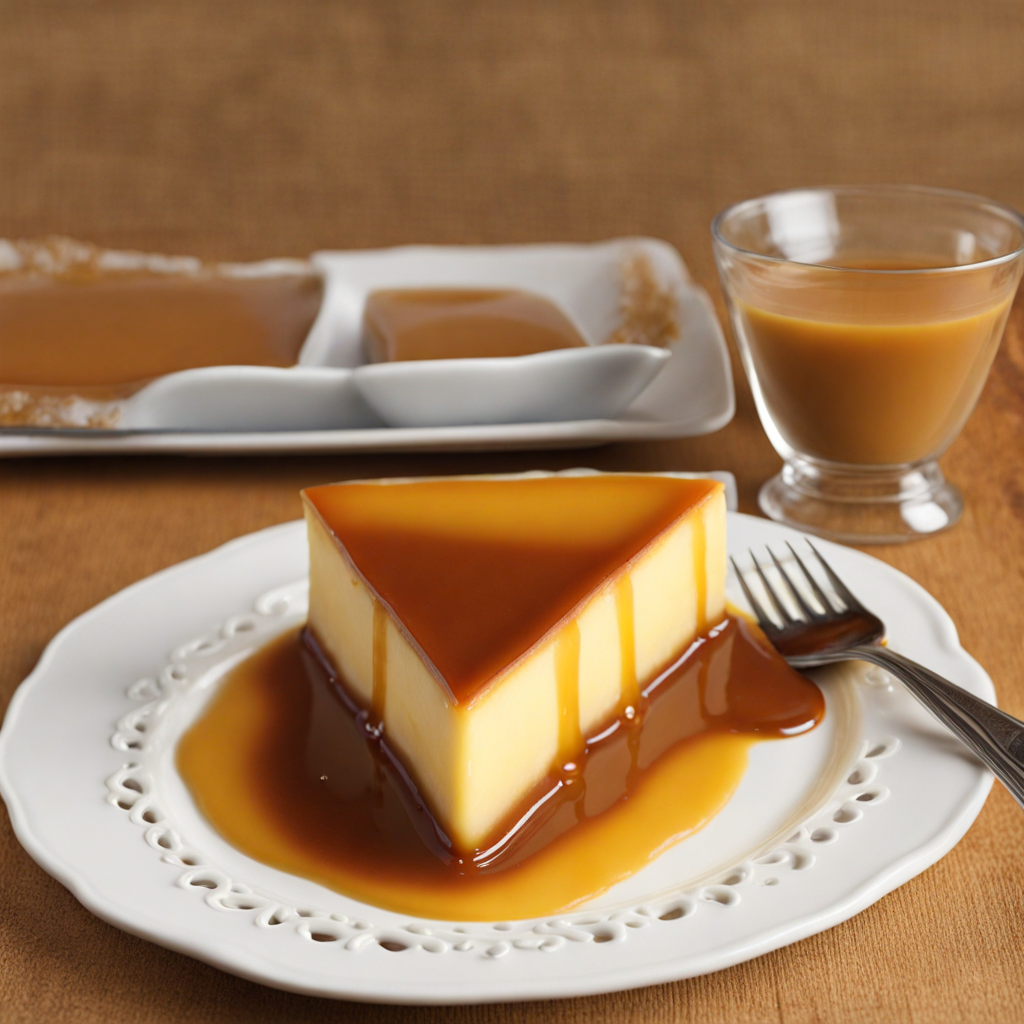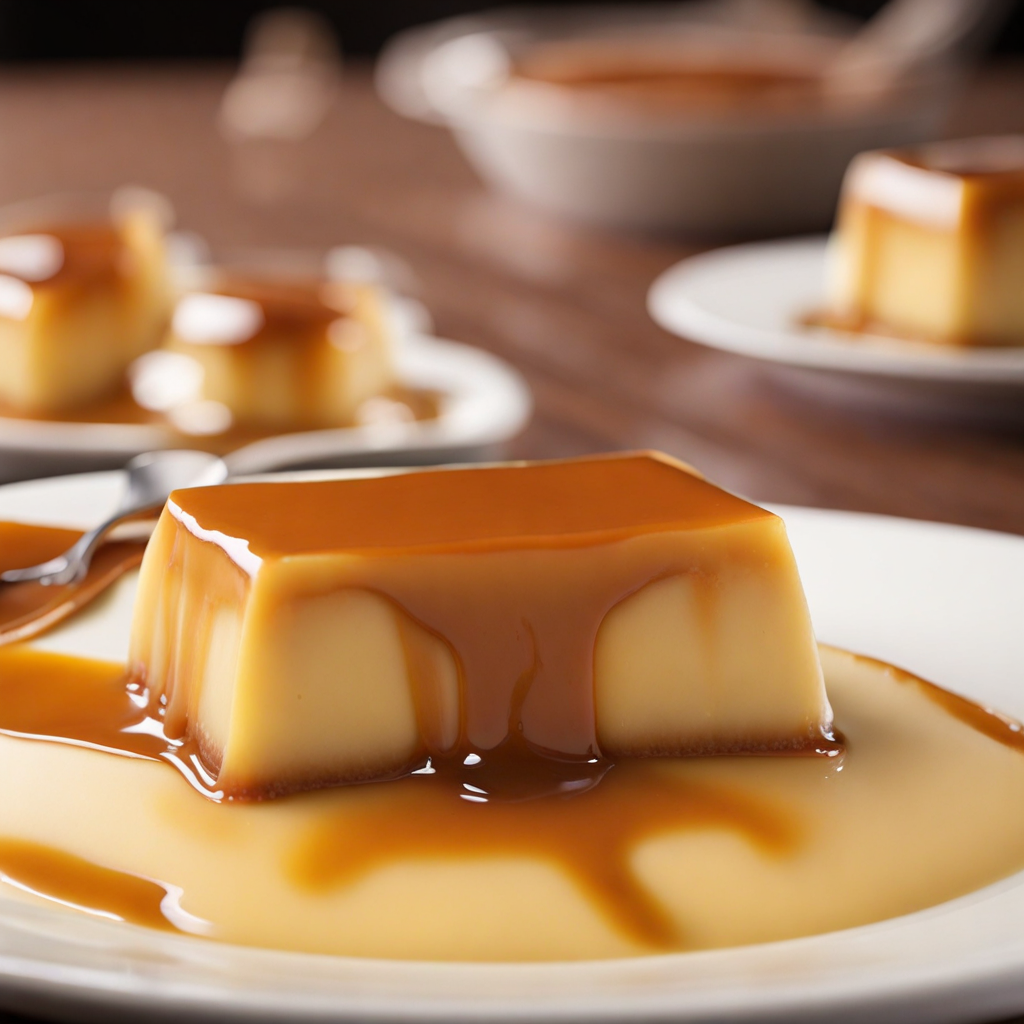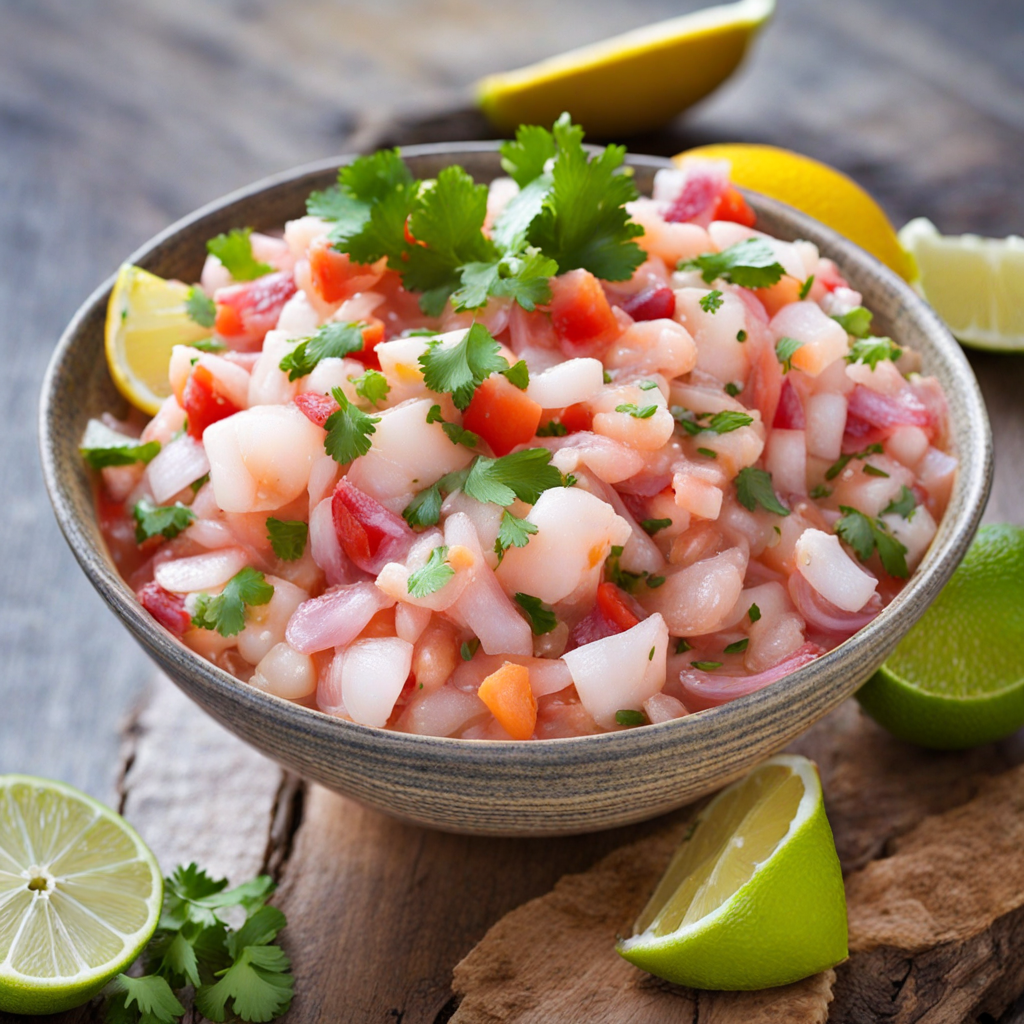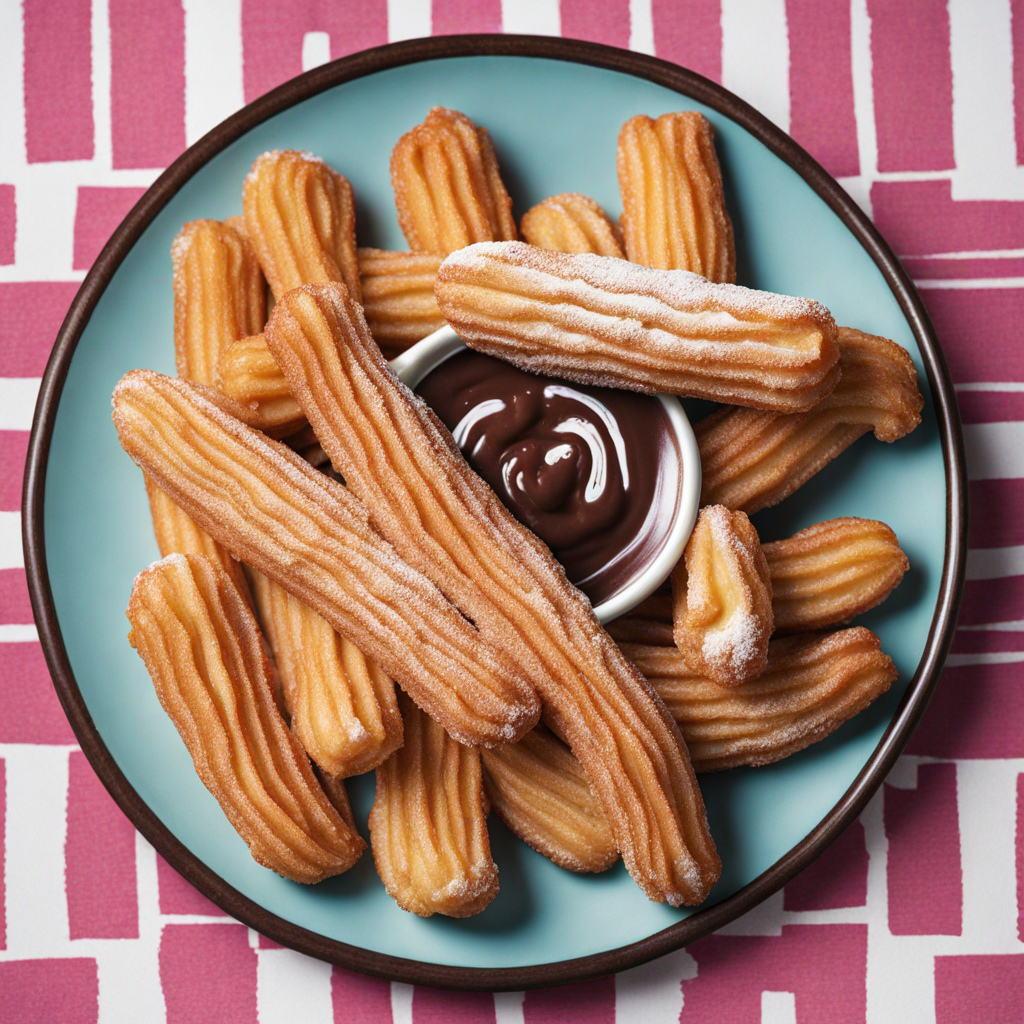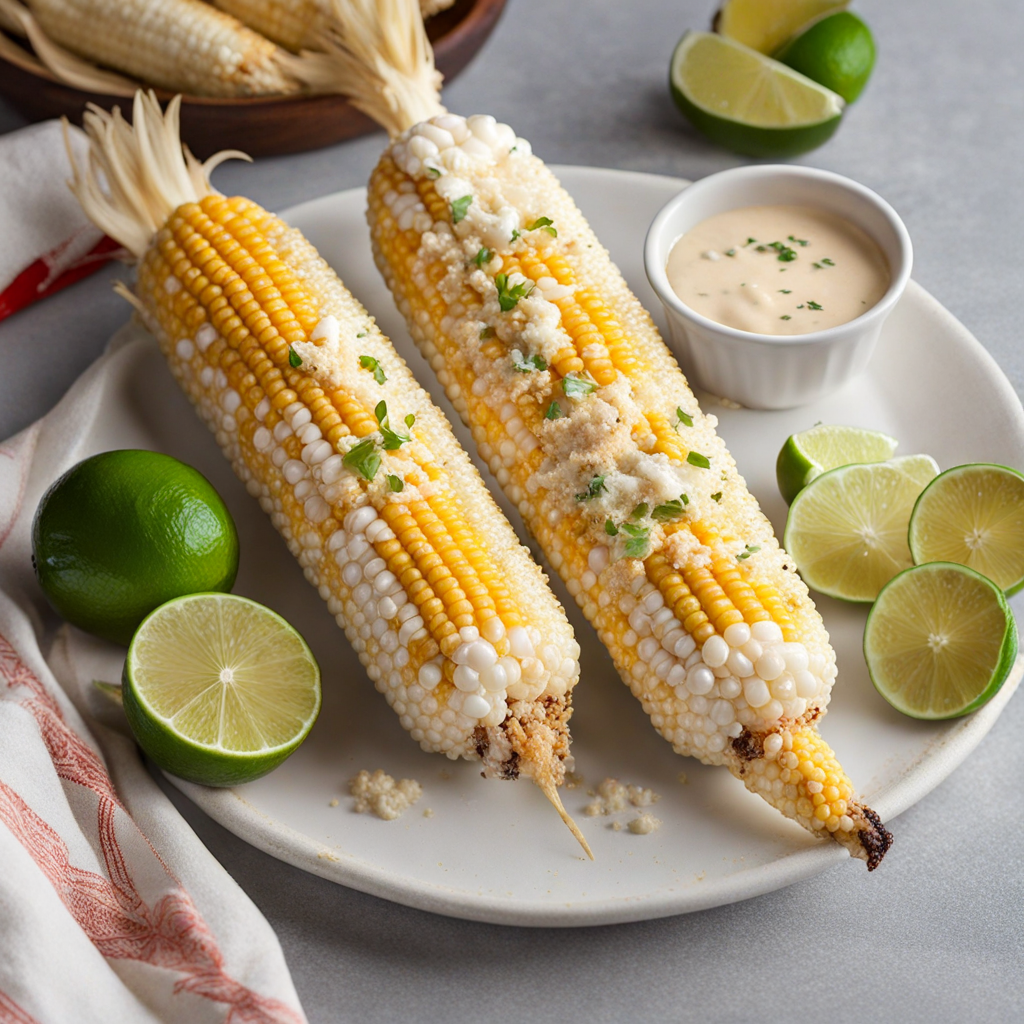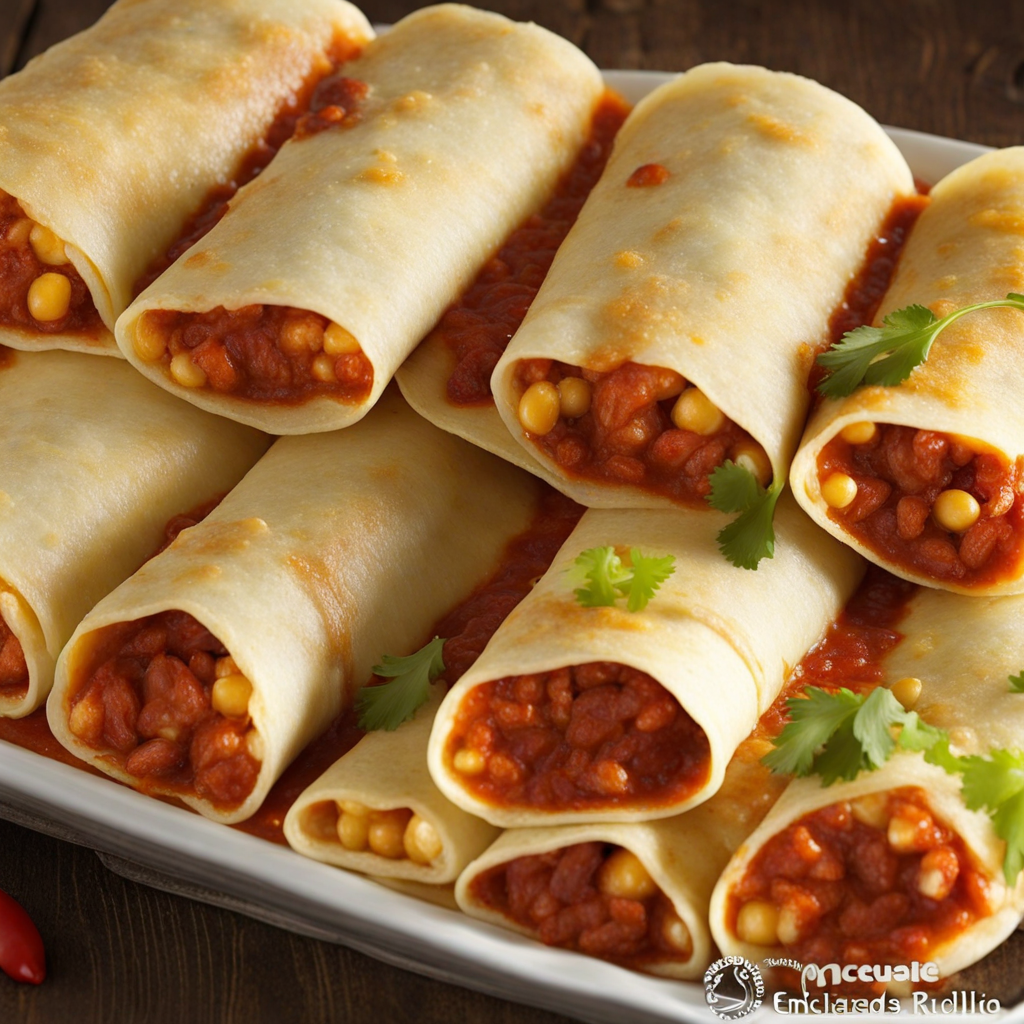Flan
Flan is a delightful dessert hailing from Mexico, celebrated for its creamy texture and sweet, caramel flavor. This traditional dish is made from a simple yet harmonious blend of eggs, milk, sugar, and vanilla, which is slowly baked in a water bath until it reaches a silky smooth consistency. The magic happens when the sugar is caramelized, creating a rich, golden syrup that coats the bottom of the flan, adding a luscious sweetness that perfectly complements its mild, custard-like base. Each slice reveals a beautiful contrast of colors—golden caramel on top and pale, creamy custard beneath. The experience of savoring flan is as pleasing as its appearance. When you take a bite, the custard melts in your mouth, offering a gentle sweetness that is both comforting and satisfying. The caramel sauce drizzles down, enhancing each forkful with its deeper, more intense flavor profile. Flan can be enjoyed chilled or at room temperature, making it a versatile dessert suitable for any occasion. Whether served at a festive gathering or as a simple end to a family meal, flan brings a sense of celebration and warmth to the table. In addition to its classic version, flan has inspired numerous variations that incorporate local ingredients and flavors. From coconut and coffee to chocolate and fruit-infused versions, there is a flan to suit every palate. However, the traditional Mexican flan remains a beloved favorite, representing the rich culinary heritage of the country. With its blend of textures and flavors, flan is not just a dessert; it's a taste of Mexico's culture, a sweet embrace that invites you to explore and enjoy the delightful world of Mexican cuisine.
How It Became This Dish
The Sweet Journey of Flan: A Culinary History from Mexico Flan, a delightful custard dessert topped with a glossy caramel sauce, has a rich and complex history that weaves through various cultures, but its prominence in Mexico has made it a beloved staple of its culinary landscape. To understand flan’s significance in Mexican cuisine, we need to explore its origins, its introduction to the New World, and its evolution through time. #### Origins of Flan: A Global Perspective The roots of flan can be traced back to ancient civilizations. The concept of custard-like dishes can be seen as far back as the Romans, who created a savory form of flan made with eggs and milk, often flavored with ingredients like fish or game. The term “flan” itself is derived from the Old French word “flan,” which comes from the Latin “fladonem,” meaning flat cake. As the Roman Empire expanded, the culinary traditions spread across Europe, adapting to local tastes and ingredients. By the Middle Ages, sweet custards became popular in various parts of Europe, particularly in France and Spain. The Spanish version of flan, known as “flan de huevo,” began to take shape, sweetened with sugar and flavored with vanilla, cinnamon, or lemon zest. #### The Arrival in the New World The introduction of flan to Mexico is closely tied to the Spanish colonization in the 16th century. As the Spanish brought their culinary traditions to the New World, they also introduced sugarcane, an important ingredient in flan. The fusion of Spanish custard recipes with local ingredients and flavors gave rise to a unique Mexican interpretation of flan. In Mexico, flan quickly gained popularity among both the indigenous populations and the Spanish settlers. The use of local ingredients, such as vanilla from Veracruz and the incorporation of spices like cinnamon, began to define the Mexican version of the dessert. This adaptation not only showcased the blending of cultures but also highlighted the importance of using locally sourced ingredients, a principle that remains central to Mexican cuisine today. #### Cultural Significance Flan occupies a special place in Mexican culture, often served at celebrations, family gatherings, and festivals. It is a dessert that transcends class and social barriers, enjoyed by both the wealthy and the humble. Its creamy texture and sweet, caramelized topping make it an ideal ending to festive meals, especially during significant holidays such as Día de los Muertos, Christmas, and birthdays. The preparation of flan is also a communal activity, often passed down through generations. Families may have their own secret recipes or techniques, making it a personal and cherished dish that evokes memories of home and tradition. The act of making flan can symbolize familial bonds, as recipes are shared and adapted, creating a sense of belonging and heritage. Flan’s significance extends beyond its delicious taste; it is a representation of cultural identity. In a country known for its vibrant culinary diversity, flan stands as a unifying symbol of Mexican gastronomy, embodying both indigenous and European influences. Its presence on tables across Mexico speaks to the country’s rich history and the blending of cultures that has shaped its culinary landscape. #### Evolution and Modern Interpretations As time progressed, flan continued to evolve. The advent of globalization and the rise of culinary tourism have introduced flan to an international audience, allowing for various interpretations and adaptations. While traditional flan is still beloved, modern chefs and home cooks alike have experimented with flavors and textures, incorporating ingredients such as coconut, chocolate, coffee, and even fruit purees. In contemporary Mexican cuisine, flan remains a staple, but it is often paired with innovative twists. Chefs may serve it alongside fresh berries, a dollop of whipped cream, or even a drizzle of fruit sauces, showcasing the versatility of this classic dessert. The introduction of new flavors and presentation styles reflects the dynamic nature of Mexican gastronomy, where tradition meets innovation. Moreover, flan has also found its place in the global culinary scene. Variants of flan can be found in other Latin American countries, each with its unique spin. For instance, in the Philippines, a similar dessert called “leche flan” is widely popular, made with additional egg yolks, resulting in a denser texture. This adaptation further emphasizes the interconnectedness of culinary traditions across borders. #### Flan in Popular Culture Flan’s cultural impact has also permeated popular culture, appearing in literature, music, and film. Its mention in Mexican songs and stories often evokes nostalgia and a sense of home. Social media has played a significant role in the resurgence of interest in traditional recipes, allowing home cooks to share their flan creations and variations with a global audience. Flan has also become a symbol of Mexican food in the United States, where it is often featured in Mexican restaurants and catered events. This visibility has helped to elevate the dessert from a humble family treat to a recognized icon of Mexican cuisine, celebrated by diverse communities. #### Conclusion Flan is more than just a dessert; it is a testament to the rich tapestry of Mexico's history, culture, and culinary arts. From its ancient Roman origins to its evolution in the hands of Spanish colonizers, and its current status as a beloved dish in Mexico and beyond, flan encapsulates the beauty of culinary fusion. As it continues to adapt and thrive in modern kitchens, flan serves as a reminder of the importance of heritage, family, and the simple joy of sharing good food. Whether enjoyed at a festive gathering or as a comforting treat at home, flan remains a sweet symbol of tradition and identity in the ever-evolving landscape of Mexican cuisine.
You may like
Discover local flavors from Mexico


